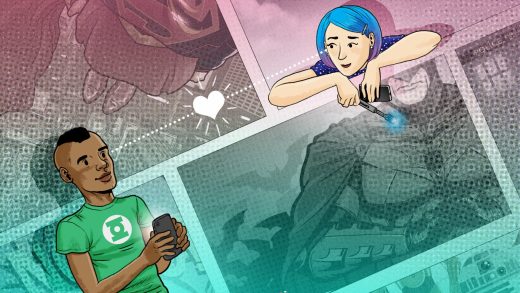One of the most common mobile operating systems is Android. Statistics showcased that Android accounted for nearly 80 percent of global smartphone users.
As of September 2018, Android became the most used operating system with nearly 76 percent of smartphone users and 30 percent of tablet users, worldwide.
The omnipresence of Android has been drawing the attention of smartphone users. Known as an open source software stack, Android is a leading platform that paves the right pathway for proper customization of both hardware and software choices. This further allows developers to curate impeccable applications and services. Android is the center of attraction for all users trying to acquire the best features through their smartphones or gadgets.
Though fame has been flourishing, Google has been diligent in the development of a new buzz: an alternative to Android. Not that Android has been under any toll. Rather it is one of the most competitive operating systems against Apple’s iOS, curbing out a nearly 91 percent loyalty rate. Now, Google aims at creating a future that is not restricted to mobile but will connect to any device or gadget.
A new venture with Google Fuchsia
The name of the future is Fuchsia. The public development phase began silently. Fuschia opens doors as open source code. Fuchsia’s functionality is huge. Google techies aim to use this venture with all Android devices, including third-party devices, smart home gadgets, and Chrome laptops. To be specific, Google envisions a single operating system powering every piece of hardware it functions on.
SEE ALSO: ThoughtWorks Technology Radar: Istio, Knative, WebAssembly & Flutter are worth exploring
When Android came into functionality, enhanced technologies like AI became a tower of strength to Google’s mobile strategy. Though it originally started in 2016, Fuchsia has yet to explore the Tinseltown of the Android world. Matching it up to the level of the functionalities of Android, (enhanced software versions, uniform UI, rapid security updates) curating all the features into one new revolutionized mobile platform is a new leap. It is expected that Fuchsia is going to make its way to the smartphone market by 2023.
As technology upgrades, the chances of Fuchsia replacing Android within the next 10 years or so rises. If you are a techie, it is a wise decision to delve into the concept of transition. You will have to garner knowledge on the functionality of existing apps working on a new platform. So, when compared to Android, Fuschia has similar features, utilitarian platform, and a comparable ecosystem.
With Fuchsia, this new venture of providing all-in-one capable features, flexibility, scalability and reliability for the development of a new platform is highly dexterous.
Revolution of app development through Google Flutter
There is a possibility of taking a leap on Fuchsia’s development through Google Flutter. It is important to acquire basic knowledge of Flutter. Flutter is an open source cross-platform mobile development framework used for creating apps. Developed by Google, Futter’s first alpha version (v0.0.6) released in May 2017; its present version is beta (v0.11.7).
The Flutter framework can also create native apps for both Android and iOS. The single codebase functions well with native APIs and services. Whereas, its mobile UI framework helps curate animations with the same features presented in every native platform. To be more specific, Flutter presents 60 fps performance and 120 fps on devices capable of acquiring 120Hz updates. Though the framework has not been around for long, it is a new venture in the evolution of cross-platform and future-thinking app development. Flutter is the new black for Android developers.
Creating an application Flutter paves a pathway for creating enhanced applications. When Fuchsia launches, developers with knowledge of Flutter can move their existing apps to the new platform without any hindrances. For Android and iOS users, will be a rollercoaster of compiling an existing app for a brand new platform. Through Flutter, developers will be able to make the new expansion of the robust library of apps transitioning to Fuchsia.
Before you develop for Fuchsia, you need to learn the skillset for Google’s programming language, Dart, for framework development. Dart is the language that meets all needs and requirements for any mobile platform. Once you learn proper Dart and Flutter functionality, you and your team will be able to create apps that run on all mobile devices. Not only will this save time gaining recognition in the market, but also ensure enhanced features and functionality among apps on all platforms.
Concluding thoughts
Shifting millions of users from one OS to a brand new operating system is not a five-finger exercise.
SEE ALSO: Meet Hummingbird, Flutter’s web platform prototype
With the development and debut of Fuchsia, developers will not have the hassle of starting from scratch and putting together a new application in a new language. Through Fuchsia’s implementation on smartphones to different IoT devices, developers will acquire the usage of tools and showcase the new language of the next generation.
You cannot predict if this will replace existing operating systems or if it will be a completely new platform for mobile devices. When it comes to Google’s development, you never know what’s coming.
The post Is Flutter the future of Android app development in 2023? appeared first on JAXenter.
Source : JAXenter




















